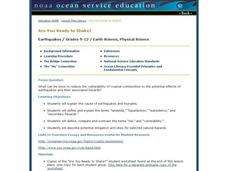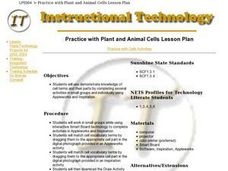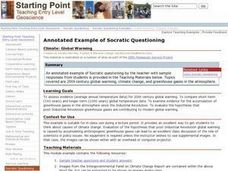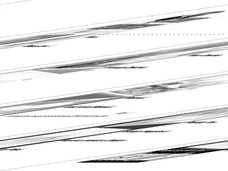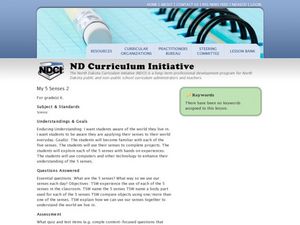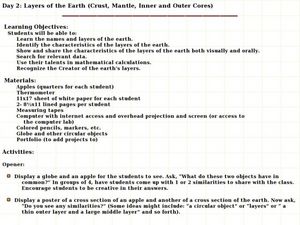Shodor Education Foundation
Incline
Study velocity while examining graphical representations. As scholars work with the animation, they discover the effect the height of an incline has on the velocity of the biker. They make conclusions about the slope of the...
Bonneville
Illuminate Me: Merging Conductive Sewing, Technology, and Solar Power
Sew up a unit on solar energy with a hands-on project. Groups sew LED lights on clothing using conductive thread. Solar modules attached to a helmet provide the energy for the lights. A final presentation gives learners the opportunity...
Curated OER
Plate, punch card, and instructions for Herman Hollerith's Electric Sorting and Tabulating Machine
Pupils read an article and participate in a class discussion. In this technology and engineering lesson students conduct an online search for images and terms.
Curated OER
Five Kingdoms of Living Things
Fifth graders are introduced to the classification system used in Science. In groups, they explain the characteristics of each of the five kingdoms. After watching a video, they review the life processes of each kingdom and complete a...
Curated OER
Name That Volcano
Students research volcanoes. In this volcanoes lesson, students visit websites with worksheets about the terms for volcanoes and volcanic eruptions in the world. Students complete the work online and play a game for volcano names.
Curated OER
So, What's it Doing Today?
Students describe short-term variations in oceanographic parameters in the Gulf Stream. In this ocean habitats lesson plan students use satellite imagery to obtain information in the Gulf Stream.
Curated OER
Are You Ready to Shake
Students examine earthquakes and tsunamis. In this Earth science lesson, students investigate the causes and hazards associated with earthquakes and tsunamis.
Curated OER
Investigating the Biosphere With Planetary Models
Students create a biosphere using the computer program SImEarth. They work in small groups to create "Daisyworld" in which they model aspects of the Gaia hypothesis. They form a question to answer and choose variables to investigate in...
Curated OER
Skin: Skin Prints
Students explore human anatomy by participating in a print experiment. In this human skin lesson, students define the term "epidermis" and utilize computer paper, pencils, tape and baby wipes to create a print of their own skin. Students...
Curated OER
Practice with Plant and Animal Cells
Students work in small groups to match cell vocabulary terms to the appropriate cell part in a photograph. They use a draw program to sketch a plant and animal cell.
Curated OER
Annotated Example of Socratic Questioning: Climate: Global Warming
Young scholars compare and discuss short-term and longer-term global temperature data. They evaluate data from three sets of graphs and then participate in a structured whole class Socratic discussion on the possible causes of climate...
Curated OER
Global Warming: The Greenhouse Effect Debate
Students gather information about the Greenhouse Effect and participate in a debate about the merits of this theory on both sides. They explore the Greenhouse Effect, and its possible long-term effects, from a variety of resources.
Curated OER
What Is Your Explanation for the Evidence?
Students encounter an interactive computer program activity designed as a diagnostic of student beliefs related to the theory of evolution. Students process the Hypercard cascades structured around a set of biological topics related to...
Curated OER
Oil Spill
Fourth graders watch a video about the types of products made from oil or oil used as energy to produce the product. In groups, they identify the positive and negative aspects of oil and participate in various activities. They use the...
Curated OER
Birds of a Feather Flock to the Web
Students define the term "evolution" and relate it to species adaptation, supporting their ideas with examples. They locate, correctly cite, and briefly review two Web sites with information on finches commonly found in their state or count
Curated OER
Oxidation and Combustion: Chemical Reactions in Fire
High schoolers investigate the art and science of pyrotechnics. For this chemistry and computer lesson, students learn about the chemical basis of fire and structure of fireworks. High schoolers then apply their...
Curated OER
Fish Hunt
Students prepare for a unit on aquarium maintenance by naming all the different kinds of fish they have seen either in aquariums, at home, or in the community. They use classroom computers to email other classrooms around the world for...
Alabama Learning Exchange
Diverse Life Forms of the Ocean
High schoolers recognize marine organisms and differentiate between plankton and nekton. For this investigative instructional activity students create a concept map using their list of terms and study marine life forms.
Curated OER
The Chemosynthetic Cafe
High schoolers study photosynthesis and chemosynthesis. In this chemosynthetic lesson students explain the processes of these and define terms.
Curated OER
My Five Senses 2
Students investigate the five senses. In this five senses lesson, students answer essential questions about the use of the five senses as they interact with their environment. They use a computer software program to make a concept web...
Curated OER
Magnetism
Students explore physical science by participating in a class science activity. In this magnet attribute lesson plan, students define a list of scientific vocabulary terms associated with magnets and participate in hands on magnet...
Curated OER
Agriculture Scavenger Hunt
In this science worksheet, young scholars find the words that are related to the finding of terms and information about agriculture for ten questions. The answers are on page 3.
Curated OER
Layers of the Earth (Crust, Mantle, Inner and Outer Cores)
Students study the layers of the Earth. In this Earth's crust lesson students complete an activity, divide into groups and diagram and define given terms.
Curated OER
How Green Are You?
Students investigate environmental care by listing ways they preserve the Earth each day. In this green living habits lesson, students collaborate in groups to brainstorm ways they can "be green" more often in their communities. Students...








